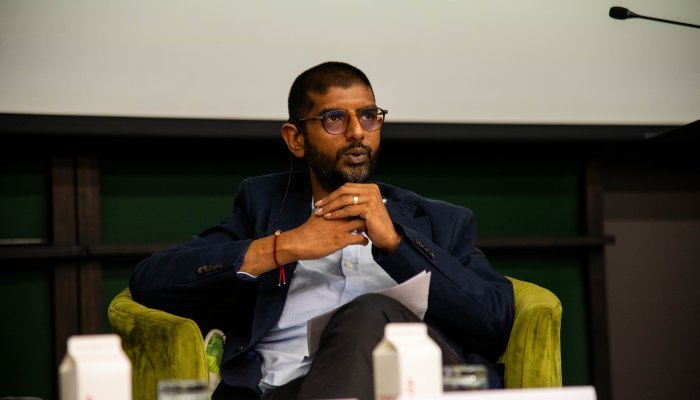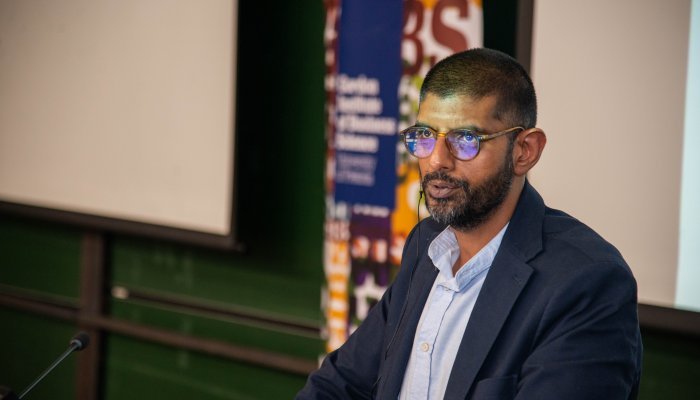The launch of ChatGPT signalled artificial intelligence’s (AI) coming of age. In quick succession, a positive flurry of competitors followed, most recently X’s Grok. Most people’s gut feel is that the adoption of AI is going to result in a jobs bloodbath. Dr Mark Bussin, who is the board chair of the HR and remuneration consultancy 21st Century, and who is active in the rewards space, probably speaks for everybody: “Yes and no − AI is definitely already taking jobs, but it’s also creating new ones at the same time.”
Unpacking this statement is deceptively easy. Yes, many jobs will be lost but, at the same time, many will be created. But what precisely does that mean for business in particular?
This question has been hotly debated at least since the landmark 2013 paper by Carl Frey and Michael Osborne, The Future of Employment. They found that 47% of US jobs were at risk from “computerisation”, with low-skill and low-wage occupations most at risk.
Fast forward to May 2023 and the World Economic Forum’s Future of Jobs Report 2023. The basic conclusions are unchanged: technology adoption will remain a key driver of business transformation over the next five years, obviously impacting the labour market. Employers see a 23% churn in jobs over the same period, with some declining and new ones being added; in similar vein, 44% of workers’ skills will be disrupted. AI is expected to be adopted by over 70% of the companies surveyed, with 50% of respondents expecting AI to create jobs and 25% that it will eliminate jobs. Thus, AI will result in a net jobs gain over the five-year period (which, if true, is unlikely to be so for South Africa).
Importantly, the report notes that automation is happening slower than expected − Frey and Osborne’s 47% figure is ahead of the current estimate that 34% of all business-related tasks are automated.
Risk factors
For managers and employees, one of the most important questions is what factors put jobs at risk from ever-smarter machines and algorithms? A GIBS white paper by Chandon Bezuidenhout, Albert Wöcke, Neville Plint, and Morris Mthombeni looks at the impact of technological change on workforce structures and industries, focusing not on jobs per se but the structure of organisations.
To this end, the authors explicitly looked beyond the models previously used − the canonical skill-based technological change hypothesis and the subsequent one based on routine and complexity (the latter being the model used by Frey and Osborne). Rather, they used stratified systems theory to classify jobs in terms of the cognition needed to perform activities− the end result is a series of seven hierarchical strata of increasing complexity of work, ascending from simplicity to complexity. They were then able to calculate the probability of job automation for each stratum, and thus how the relative percentages of workers in each stratum in a company would alter as technology improves and is adopted.
Unsurprisingly, the Bezuidenhout paper shows that the workforce structure of the US economy will undergo significant change, with sratum 1 jobs declining from 54% in 2016 to 27% in 2036. This reduction, it points out, would be offset by increases in the relative proportions of other strata: stratum II will increase from 28.2% to 41.2%, stratum III from 16% to 28.2%, stratum IV from 1.6% to 3.2% and stratum V from 0.2% to 0.4%.
Detailed analysis by industry sector is provided, and the sectors are clustered into those with a high projected change in employment (above 50%) and those with a low projected change. The former cluster comprises 12 sectors: retail trade; manufacturing; accommodation and food services; mining, quarrying, oil and gas extraction; finance and insurance; administrative support, waste management and remedial services; transportation and logistics; arts, entertainment and recreation; wholesale trade; construction; real estate, rental and leasing; and other services.
Those with least change are utilities; management of companies and enterprises; professional, scientific and technical services; federal, state and local government; information; healthcare and social assistance; educational services; and agriculture, forestry, fishing and hunting.
The white paper concludes that South Africa will suffer high levels of disruption given our high levels of unemployment and a workforce with low levels of skill.
The general conclusion is thus pretty clear, while the details of how it was reached and what the specific impacts are might differ: the higher a job is up the complexity ladder, and the more cognition is required, the more secure it is.
GIBS Professor Manoj Chiba introduces a note of scepticism, arguing that the jobs themselves won’t change − what will are the components of the job. In other words, portions will be automated but humans still add a lot of value in producing the desired output. “AI will help us by making us more productive,” he argues. However, recent McKinsey research shows that increasing AI sophistication is increasing productivity while disrupting the jobs held by white-collar knowledge workers as more of their work is automated. This would imply the number of humans needed to perform these tasks could decrease, although greater productivity leading to lower prices often spikes demand, as it did when Henry Ford introduced mass production of the Model T Ford.
Be that as it may, Professor Chiba goes on to say that he’s “fearful” about the impact on South Africa.
Implications for business and government in South Africa
The march of AI will continue ineluctably and there is every indication that the Holy Grail of generative AI (i.e. machine intelligence that matches or even surpasses human intelligence) is, if not within sight, then within the bounds of possibility. As Professor Wöcke observes, the Covid-19 lockdowns, which forced quicker adoption of technology, have played a major role bringing all existing projections forward. He agrees that adoption of AI is highly variable, but it is occurring − and is causing major disruptions to the labour market.
As a result, the war for talent able to work alongside these new and rapidly changing technologies is hotting up, and will affect HR planning into the future. Not only the types of skills needed but the proportions of workers in each stratum (following the Bezuidenhout model), will change, and must be planned for.
Both Dr. Bussin and Prof. Wöcke see AI as potentially positive for smaller businesses. For example, a small engineering firm could acquire a robot for as little as R200 000 that would help it compete more effectively with bigger firms.
The big challenge for this country is that whatever the nature of the labour-market disruptions look like, new skills will have to be acquired and then re-acquired as needs change. It’s clear, Prof. Wöcke says, that English proficiency, and the ability to work on a screen and use the Internet are fundamental skills, while our high smartphone penetration will be an advantage.
At a state level, clearly the already dysfunctional educational system will have to be comprehensively overhauled to ensure that matriculants with the necessary basic skills are being produced. Failing to do this will ensure our high unemployment rate and faltering economy will continue.
Prof. Wöcke argues that companies have a moral duty to find ways of looking after those workers whose jobs are disrupted. “Retraining staff to take on jobs they were never prepared for will undoubtedly be difficult, but it has to be done,” he says. “HR processes will also need to be repurposed to ensure we are hiring the right people, and that the continuous training required is provided.”
He also concedes that fewer jobs are likely to be needed, and some sort of solution needs to be found − perhaps along the lines of a basic income grant, although funding such a scheme is a challenge in its own right.
Dr. Bussin is equally alive to the moral implications, pointing out that pension and provident schemes are going to need much more money − corporate contributions will need to rise to double those of the individual, he believes. Unions, too, need to inform themselves about the unfolding job revolution, and move away from making “ridiculous” pay demands to focus on pressurising the government to deliver better education at scale.
Prof. Chiba adds that employees, and citizens more generally, need to take responsibility for ensuring they keep track of what new skills are needed and make sure they acquire them.
Technology has disrupted established markets and labour practices since antiquity. Perhaps the best example in terms of scale is the First Industrial Revolution, which destroyed many agricultural jobs but new jobs opened up the opportunities inherent in urban living; similarly, the motor car effectively destroyed the industry centred on horses while opening up new opportunities. But for individuals, companies and economies to take advantage of the opportunities that new technologies throw up, they have to have the right skills.
“We have to change our attitudes to lifelong learning or we won’t survive,” concludes Prof. Chiba.
KEY TAKEAWAYS
- The higher the cognitive skills required, the less at risk the job.
- Many jobs will disappear, but new ones will appear − but overall, jobs will be lost.
- Companies and individuals must both take responsibility for continuous reskilling/ upskilling to compete for these new jobs.
- HR needs to stay on top of succession planning and identifying new job categories.











